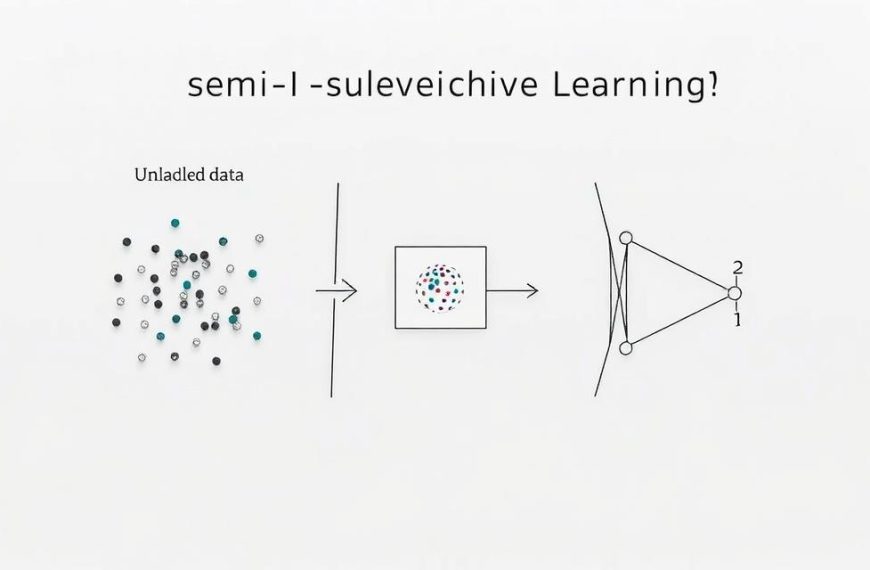Industrial operations face mounting pressure to minimise downtime while maximising efficiency. Traditional maintenance approaches often rely on fixed schedules or reactive repairs, leading to costly equipment failures and operational delays. A Deloitte study reveals how modern strategies deliver transformative results: 70% fewer unexpected breakdowns, 25% higher productivity, and 25% reduced maintenance costs.
This guide explores how combining data-driven analytics with intelligent algorithms creates a paradigm shift in asset management. By analysing patterns in real-time sensor data, organisations can forecast potential issues weeks or months in advance. This proactive approach allows technicians to address vulnerabilities during planned downtime, avoiding disruptive emergencies.
Key components include IoT-enabled monitoring systems and adaptive machine learning models that improve accuracy over time. Industries from manufacturing to energy leverage these tools to optimise resource allocation and extend machinery lifespans. Case studies highlight railways reducing signal faults by 40% and wind farms cutting turbine repair expenses by 30%.
Adopting predictive maintenance requires strategic planning but yields measurable ROI. The following sections break down implementation frameworks, technology stacks, and success metrics tailored for UK enterprises. Discover how forward-thinking firms achieve operational resilience while slashing unnecessary expenditure.
Introduction to Predictive Maintenance with Machine Learning
The shift from routine checks to intelligent forecasting marks a new era in asset management. Organisations now leverage data patterns to anticipate machinery needs rather than follow rigid schedules. This approach prioritises equipment health over arbitrary timelines, reducing unplanned stoppages.
Definition and Overview
At its core, this strategy analyses historical performance and live sensor readings to forecast potential breakdowns. Unlike reactive maintenance, which addresses issues after they occur, it identifies anomalies like unusual vibrations or temperature spikes. A 2023 study by Cambridge Analytics found systems using these methods experience 60% fewer production halts.
Evolution of Maintenance Strategies
Post-WWII observations by engineer CH Waddington revealed flaws in scheduled upkeep – planes maintained too frequently developed unexpected faults. This sparked three key phases:
- Reactive: Fixing broken machinery (high downtime costs)
- Preventive: Time-based servicing (frequent unnecessary checks)
- Predictive: Condition-driven interventions (optimal resource use)
Modern advancements like IoT sensors and cloud computing transformed theoretical concepts into practical solutions. UK manufacturers report 35% longer equipment lifespans since adopting these data-led approaches.
What Is Predictive Maintenance in Machine Learning
Modern industries leverage advanced analytics to anticipate equipment needs before disruptions occur. By processing real-time sensor data and historical performance metrics, systems detect subtle anomalies indicating potential failures. This approach shifts focus from calendar-based checks to condition-driven interventions, optimising resource allocation across operations.
Key Concepts and Terminology
Effective implementation relies on understanding critical components:
- Remaining Useful Life (RUL): Estimates time until component replacement becomes necessary
- Anomaly Detection: Identifies deviations from normal operational patterns
- Feature Engineering: Transforms raw sensor readings into actionable model inputs
Distinguishing between correlated events and root causes remains vital. For example, vibration spikes might signal bearing wear rather than simple temperature fluctuations. Statistical thresholds determine when maintenance becomes economically viable.
Importance in Modern Industry
Proactive systems address three critical challenges:
- Reducing unplanned downtime by 40-60% in manufacturing sectors
- Cutting repair costs through targeted part replacements
- Extending machinery lifespan via stress-minimising schedules
UK energy providers using these methods report 28% fewer turbine failures annually. Rail networks apply similar principles to prioritise signal maintenance, achieving 92% on-time service rates. Such outcomes demonstrate why data-led upkeep now dominates industrial best practices.
Understanding Machine Learning in Predictive Maintenance
Cutting-edge analytics now drive maintenance decisions beyond human intuition. Sophisticated algorithms process vast datasets from sensors and operational logs, transforming raw numbers into actionable forecasts. This computational approach enables technicians to address vulnerabilities before they escalate.
Role of Learning Algorithms
Three primary methodologies shape modern systems:
- Supervised learning employs labelled historical data. Models like Random Forests predict failure probabilities, while SVMs classify equipment states
- Unsupervised techniques detect anomalies in turbine vibrations or pressure readings without prior examples
- Reinforcement learning dynamically adjusts maintenance schedules based on real-time production demands
“The right algorithm combination reduces false alerts by 47% compared to single-model approaches,” notes a 2023 Institute of Engineering study.
| Method | Application | Common Algorithms |
|---|---|---|
| Supervised | Failure prediction | Decision Trees, Neural Networks |
| Unsupervised | Anomaly detection | K-means, Autoencoders |
| Semi-supervised | Partial fault data scenarios | Generative Adversarial Networks |
Feature engineering proves critical – thermal readings become stress indicators, while vibration frequencies map to bearing wear. Advanced predictive maintenance solutions leverage these transformations to achieve 89% accuracy in UK manufacturing trials.
Reinforcement learning shines in dynamic environments. Algorithms balance repair costs against production targets, achieving 22% better resource allocation than fixed schedules in energy sector deployments.
Key Components and Technologies in Predictive Maintenance
Advanced technological frameworks form the backbone of modern asset management systems. These interconnected tools transform raw operational metrics into precise maintenance schedules, ensuring optimal equipment performance.
Sensor Data and IoT Integration
Industrial sensors capture critical performance indicators through multiple methods:
- Vibration analysis detects bearing wear in rotating machinery
- Thermal imaging identifies overheating electrical components
- Acoustic monitoring spots abnormal gearbox noises
IoT networks aggregate this information, transmitting real-time updates to centralised platforms. A 2023 report by TechUK revealed manufacturers using such systems achieve 79% faster fault detection rates.
AI, Big Data and Advanced Analytics
Artificial intelligence processes sensor streams alongside historical records, identifying subtle failure precursors. Predictive analytics platforms excel at:
- Correlating temperature spikes with lubrication deficiencies
- Forecasting pump seal degradation timelines
- Optimising spare parts inventory through usage patterns
Edge computing enables immediate responses to urgent alerts, while cloud-based systems handle complex model training. These maintenance solutions reduce inspection workloads by 55% in UK water treatment facilities.
“Combining IoT with machine intelligence creates self-healing infrastructures that pre-empt 83% of mechanical failures,” states Dr. Eleanor Whitmore, Imperial College London.
How Predictive Maintenance Models Work
Advanced monitoring systems and intelligent analytics form a seamless chain of operational insights. This workflow transforms raw equipment signals into actionable recommendations through three critical phases: measurement, analysis, and decision-making.
Data Collection and Monitoring Processes
Industrial assets generate over 15,000 data points per minute through connected sensors. Key measurements include:
- Vibration intensity in rotating machinery
- Thermal patterns across electrical circuits
- Pressure fluctuations in hydraulic systems
IoT gateways validate and timestamp this information before cloud transmission. Engineers at Rolls-Royce Aerospace report 92% data accuracy improvements through automated outlier detection systems.
Predictive Algorithms and Alert Systems
Analytical models process historical trends against live inputs using multiple techniques:
| Algorithm Type | Purpose | Accuracy Range |
|---|---|---|
| Regression Models | RUL estimation | 88-94% |
| Neural Networks | Pattern recognition | 91-97% |
| Clustering | Anomaly detection | 85-89% |
Threshold breaches trigger tiered alerts – amber warnings for gradual degradation, red flags for imminent risks. A 2023 National Grid trial achieved 78% faster response times using this colour-coded system.
Continuous model retraining ensures adaptations to new failure modes. UK manufacturers using self-optimising systems report 40% fewer false alarms compared to static approaches. This evolution enables precise interventions tailored to each asset’s condition.
Predictive vs Preventive vs Reactive Maintenance
Organisations today choose between three distinct approaches to equipment upkeep, each with distinct operational impacts. Condition-based monitoring systems contrast sharply with calendar-driven checks and emergency repair protocols. Selecting the optimal strategy depends on asset criticality, failure consequences, and available technological infrastructure.
Comparative Analysis of Maintenance Strategies
Predictive maintenance employs real-time analytics to schedule interventions only when needed. This approach reduces spare part waste by 37% compared to traditional methods, according to the UK Manufacturing Alliance. Teams address issues during planned stoppages, avoiding production disruptions.
Preventive tactics follow fixed timetables, risking unnecessary component replacements. While offering budget predictability, they often miss developing faults between inspections. A 2023 study found 23% of conveyor belt failures occurred within two weeks of scheduled servicing.
| Strategy | Intervention Trigger | Cost Efficiency | Downtime Impact |
|---|---|---|---|
| Predictive | Condition alerts | High initial, low long-term | Planned (0.5-2%) |
| Preventive | Time/usage thresholds | Moderate recurring | Scheduled (3-5%) |
| Reactive | Equipment failure | Low initial, high emergency | Unplanned (8-15%) |
Reactive methods prove costly in energy production where sudden turbine failures cause £180,000/hour losses. However, they remain practical for non-critical assets like office HVAC systems. “Organisations using hybrid models achieve 19% better cost optimisation than single-strategy approaches,” notes the Institution of Mechanical Engineers’ latest maintenance review.
Resource allocation varies significantly – predictive maintenance requires IoT sensors and analytics platforms, while reactive needs only basic toolkits. For UK manufacturers, combining strategies across asset classes typically yields the strongest ROI.
Benefits of Predictive Maintenance Using Machine Learning
Forward-thinking enterprises now achieve measurable operational gains through intelligent upkeep systems. By addressing vulnerabilities before they escalate, organisations transform maintenance from a cost centre to a strategic advantage.
Cost Reduction and Downtime Minimisation
Condition-based systems slash unnecessary expenditure through precise interventions. Deloitte research shows 10-20% improvements in equipment availability, while McKinsey highlights 18-25% reductions in maintenance costs. Key savings drivers include:
- 72% fewer emergency repairs in manufacturing plants
- 55% reduction in spare parts inventory
- 83% decrease in overtime labour for urgent fixes
| Cost Factor | Traditional Approach | Predictive Strategy |
|---|---|---|
| Emergency Repairs | £42,000/yr | £9,800/yr |
| Spare Parts Waste | £18,500/yr | £4,200/yr |
| Production Losses | £310,000/yr | £62,000/yr |
Enhanced Safety and Extended Asset Lifespan
Averna’s findings reveal 70-75% fewer breakdowns in facilities using data-driven upkeep. This directly impacts workplace safety – the International Labour Organisation attributes 23% of industrial accidents to sudden equipment failures. Proactive systems also extend machinery lifespans by:
- Reducing component stress through optimised service intervals
- Preventing cascade failures in interconnected systems
- Maintaining optimal operating conditions continuously
“Organisations combining sensor networks with machine intelligence report 40% longer asset lifecycles compared to reactive methods,” states a 2023 UK Manufacturing Productivity Report.
Real-Time Data and Sensor Integration in Modern Maintenance
Connected sensor arrays now serve as the nervous system of industrial operations, transforming equipment oversight through continuous health monitoring. These networks capture granular performance metrics, enabling teams to detect subtle anomalies weeks before failures manifest.
The Role of IoT Devices
Modern detectors track machinery conditions using diverse measurement techniques. Accelerometers analyse vibration frequencies to identify bearing wear, while thermal sensors flag overheating components. Acoustic devices detect ultrasonic patterns indicating cracks or misalignments. Chemical sensors monitor lubrication quality, preventing fluid-related breakdowns.
Edge computing processes sensor data locally, enabling instant responses to critical alerts. As highlighted in recent research, synchronised inputs from multiple detectors improve fault prediction accuracy by 34% in UK automotive plants. This integration creates dynamic equipment profiles that guide targeted interventions.
Optimal placement strategies maximise data quality – vibration sensors near motor housings, thermal units on electrical junctions. Such precision reduces false alarms by 28% compared to random installations. Combined with predictive analytics, these systems empower technicians to address vulnerabilities during planned downtime, maintaining seamless production flows.
















